
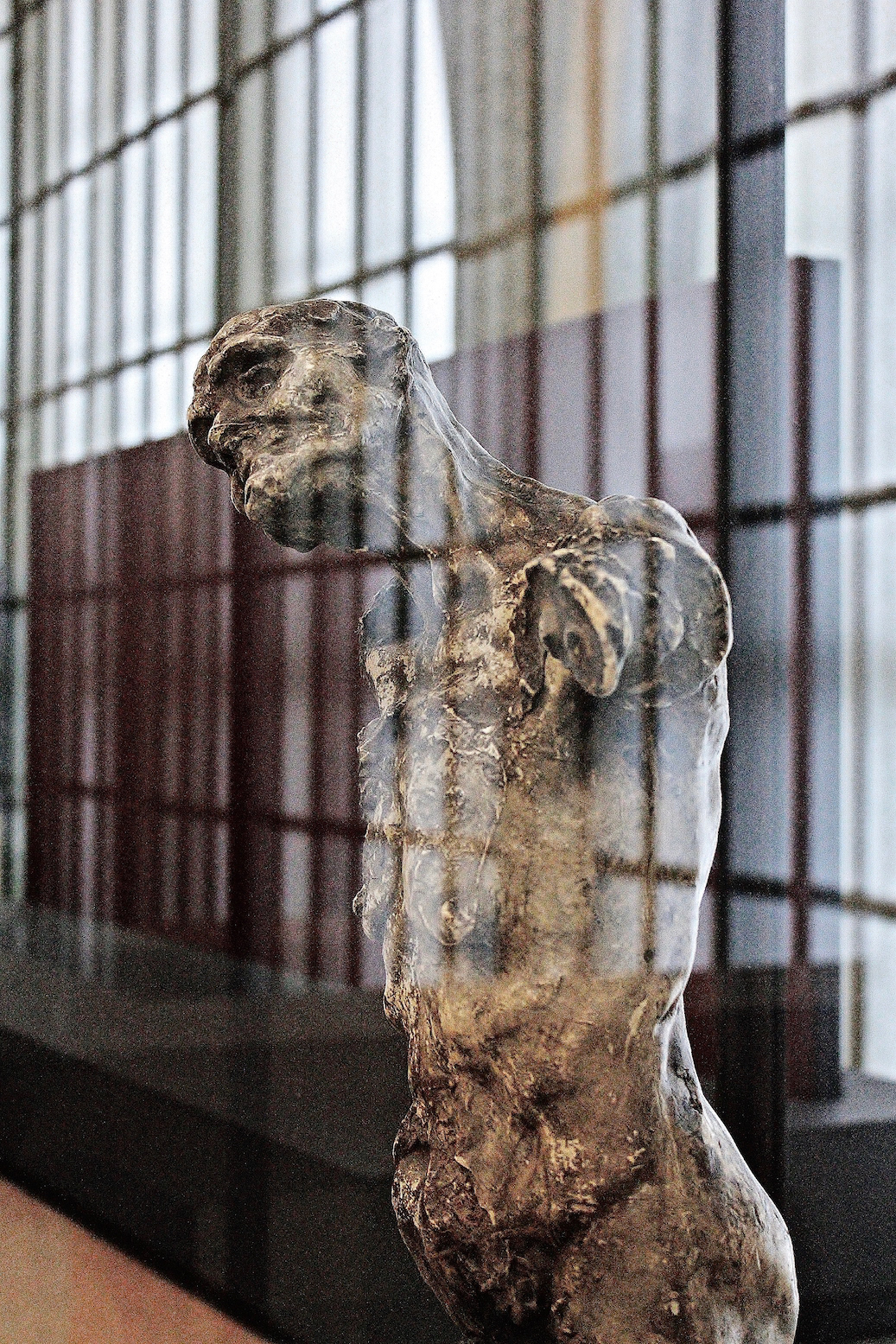
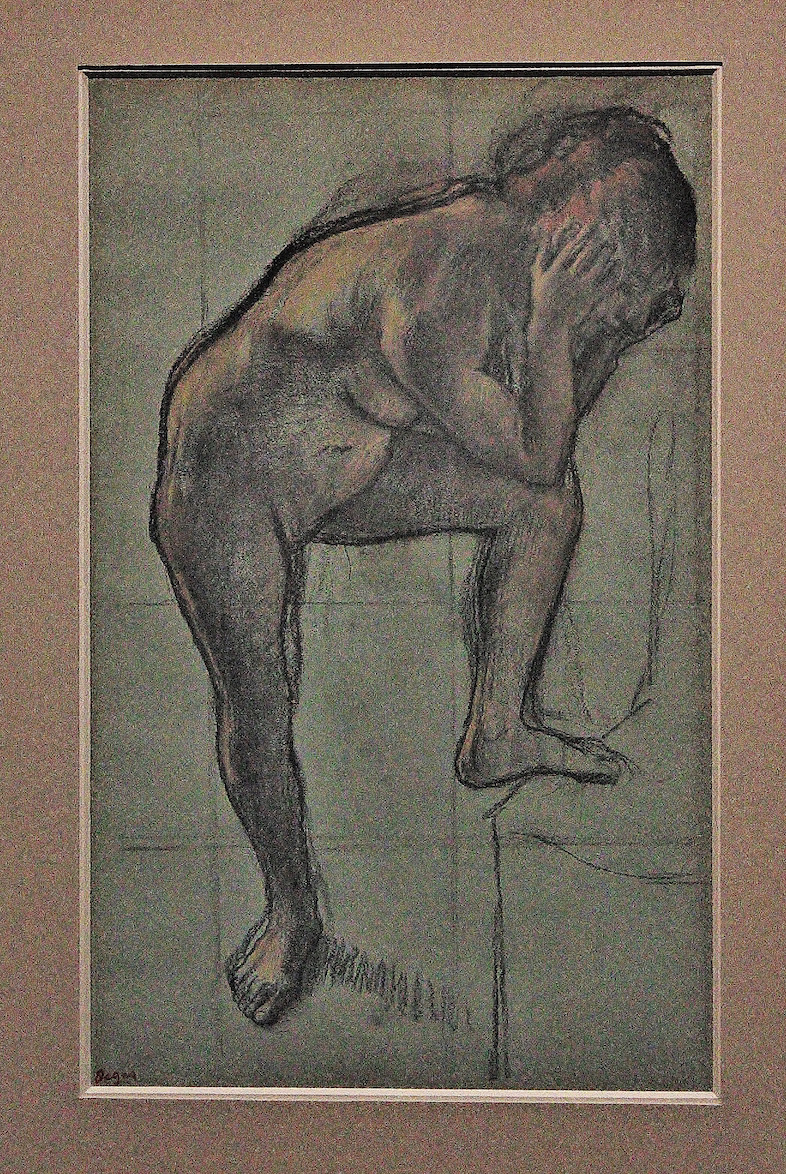
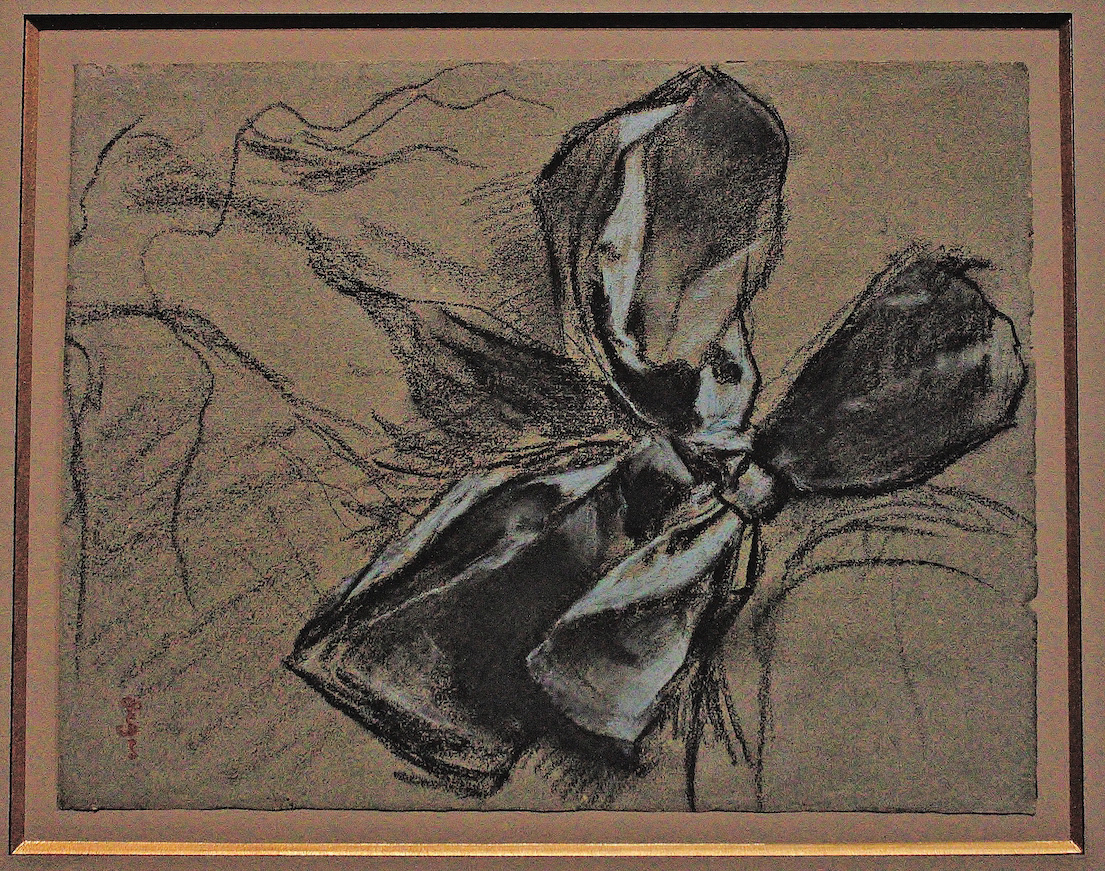
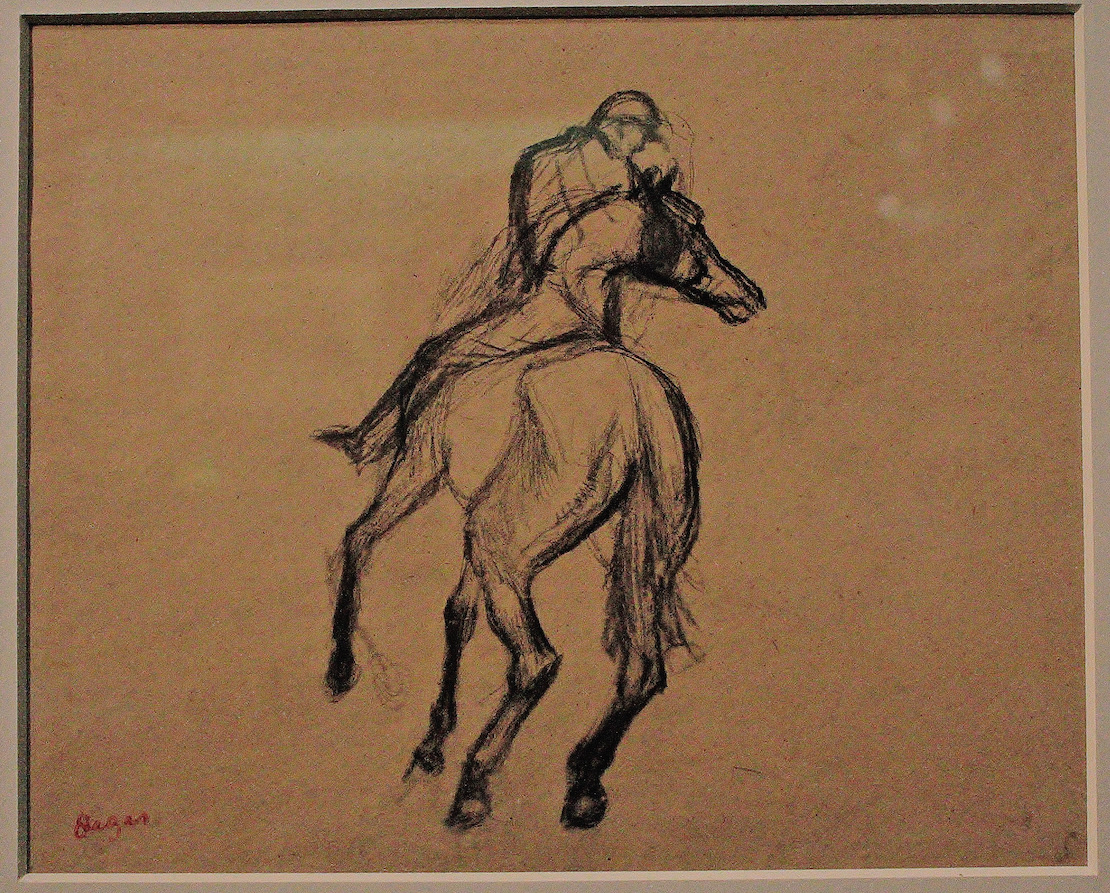


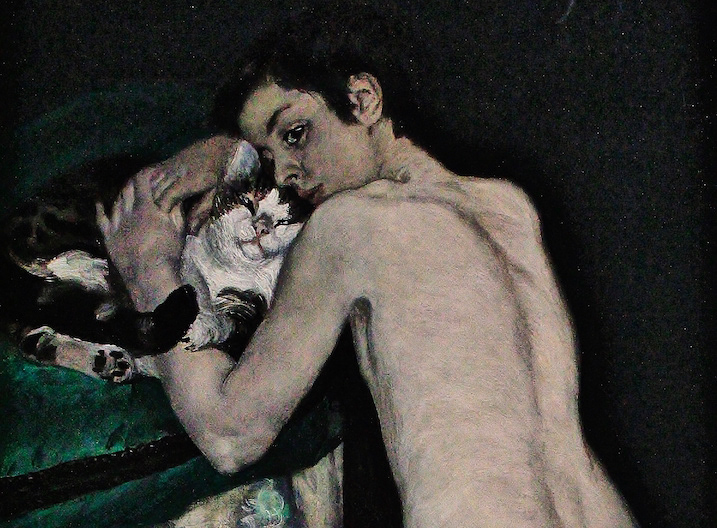
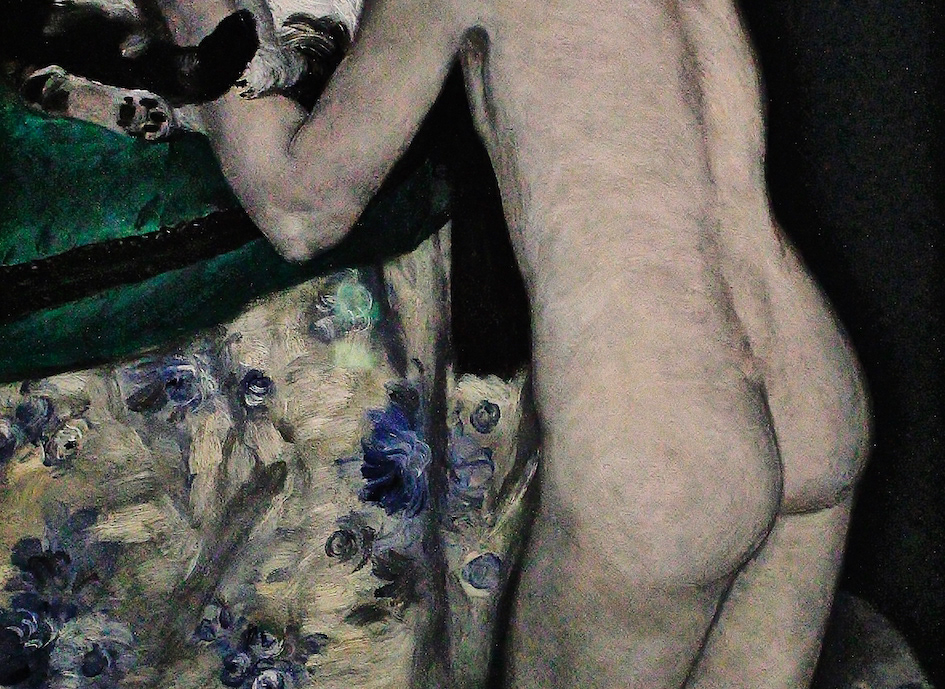
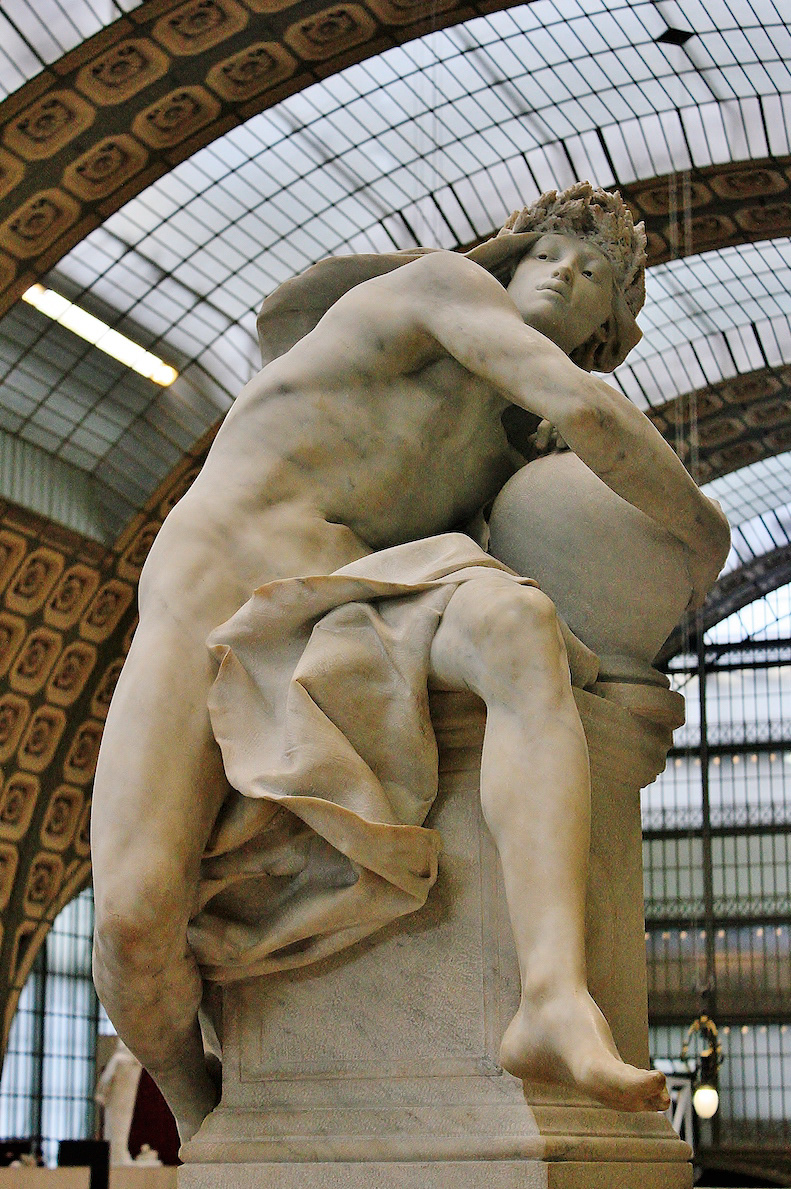
Images produced without manipulation (DSLR Camera, Canon). For the general description of the project see here.
I call the second image "La Vrille: órgão de fixação" [The Tendril: Fixing Device]. The original sculpture is Camille Claudel's "Torse de Clotho" (1893). It makes me think about the notion of "pulse," as used by Rosalind Krauss (in relation to other works): "... this pulse they employ is not understood to be structurally distinct from vision but to be at work from deep inside it... Insofar as they insist that it is not temporal, the beat they employ must, in some sense, be figural, but of an order of the figure that is far away from the realm of space that can be neatly opposed to the modality of time... there is a third order of the figure, one that Lyotard calls matrix, beyond the reach of the visible, that works underground... passivity" (The Optical Unconscious).
The penultimate two fragmental images are from Renoir's "Le garçon au chat" (1868-9). I've worked on these fragments further, producing an "alloy" I call "Mise en scène &/ou genealogia de Ariel" [Staging &/or the genealogy of Ariel] (available here).
Other works photographed and displayed here are Jean Escoula's "La Douleur," material related to Degas, Édouard Manet's "Berthe Morisot avec un éventail."
The following quotation, by Gauguin, sur Degas, is enlightening:
"... il y a si longtemps qu'il est vieux comme Mathusalem. Je dis Mathusalem, parce que j'estime que Mathusalem à cent ans devait être comme un homme de 30 ans de notre époque. En effet, Degas est toujours jeune. Il respecte Ingres, ce qui fait qu'il se respecte lui même. A le voir, il a l'air d'un parfait notaire... S'il y a un homme qui cherche peu à passer pour un artiste c'est bien celui-là: il l'est tellement... Il est très bon, mais spirituel il passe pour être rosse."
